FILMED April-November 1980
Monday morning, March 3, 1980, I reported to the 20th Century Fox lot to start my prep of OIL.
The previous two days I spent much of the time at Sarane’s house, where stunned relatives and friends gathered. Many tears flowed, but there was also laughter. It was much like a Jewish shiva. I remembered the first time I sat shiva; it was for my dad, who died in 1953 at the age of 55. I remember questioning then how in a time of grief could there be anything but tears? But there was as friends and relatives came to our home to help us grieving through the difficult time. And so it was at Sarane’s. Happy tales flowed of incidents shared with her, and I saw that there were so many different visions of Sarane, a different Sarane for different people. What became obvious was how many Sarane’s there were in her slender body. I’m not inferring she had dysfunctional multiple personalities, but that there were so many facets to her one personality. Mercurial! Adventurous, a bit Bohemian, even madcap, but also very serious with widespread interests! Her favorite authoress was Anais Nin. As well as I knew Sarane, I know now that I didn’t know all of the Sarane’s.

The only painting in oil by Sarane
When at the age of six we were in dancing school, we had a photo taken of the two of us seated back to back, our upstage leg bent with our hands holding it at the knee. We decided in our forties to duplicate the shot, but mirth overcame us.
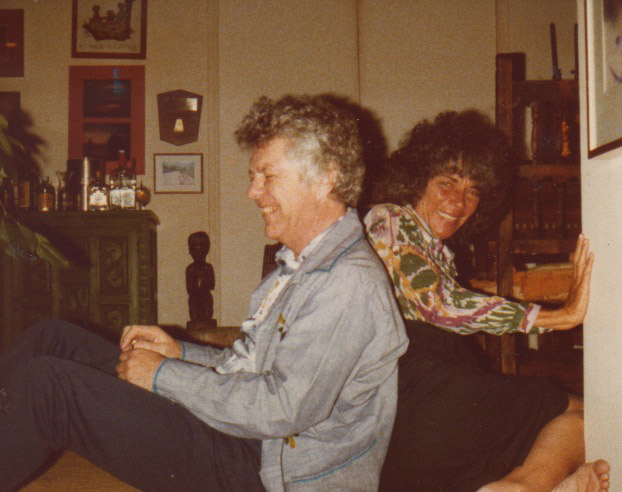
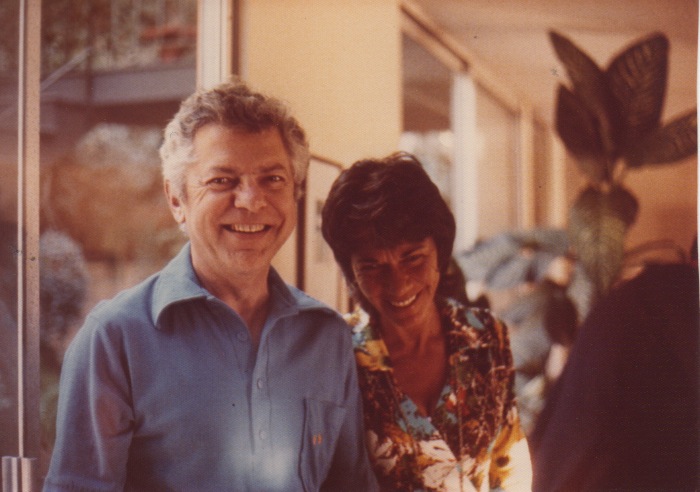
The Bobbsey Twins
And so now as it was thirty-four and a half years ago, it is time to get on with it and start the DYNASTY journey. But don’t think it was just a matter of “the show must go on.” It was more than that. To immerse myself in the troubles of the Carrington and Blaisdel families proved to be a haven, an escape.
The three major areas of activity to be contended with were script, casting and locations. Actually there were only two areas – casting and locations; the script was in fine condition.
Casting on a project like this was really done at the upper levels – Aaron Spelling’s office and the offices at the ABC network. However we did go through some of the motions down at our level. George Peppard was brought in to meet Esther and Richard Shapiro, producer Phil Parslow and me. He was a possible Blake Carrington. I had never worked with George, I had never met George, but I remembered seeing George for the first time in the late 1950’s from my production supervisor cubicle on PLAYHOUSE 90 when he was brought in by his black-suited MCA agent to meet the producer (I don’t remember if it was Fred Coe, Herbert Brodkin or John Houseman) and casting director Ethel Wynant. He never appeared in a PLAYHOUSE 90 production, but not too long after that he played Robert Mitchum’s illegitimate son in HOME FROM THE HILL and Audrey Hepburn’s lover in BREAKFAST AT TIFFANY’S. He was firmly launched, and for the decade of the 1960’s George was a genuine movie star. The 1970’s found him still a star, but mainly on television. He had just finished a project that required him to have orange hair, which still topped his six-foot frame and for which he apologized. Esther Shapiro explained that OIL (as the project was still named) was an ensemble piece, not a star vehicle. George enthusiastically proclaimed that was exactly what he wanted to do. (Remember that statement later!) No decision or commitment was made. That would be decided later at those upper echelons. I don’t know if Phil Parslow voiced his opinion to the Shapiro’s. He did tell me that he had worked with George and was not in favor of his being cast as Blake Carrington.
Along with the casting, Phil and I had to find the locations, and there were a lot of them.
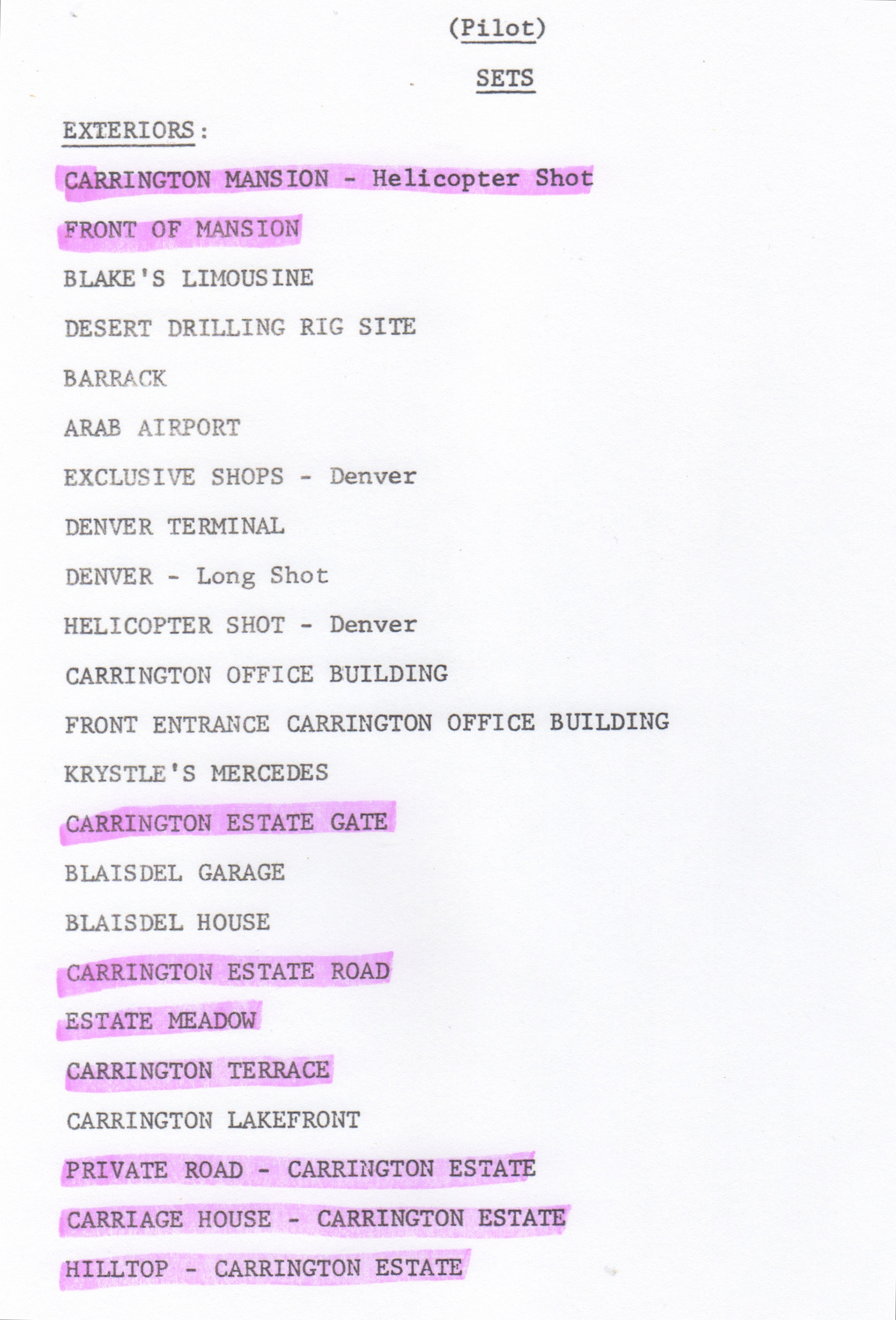
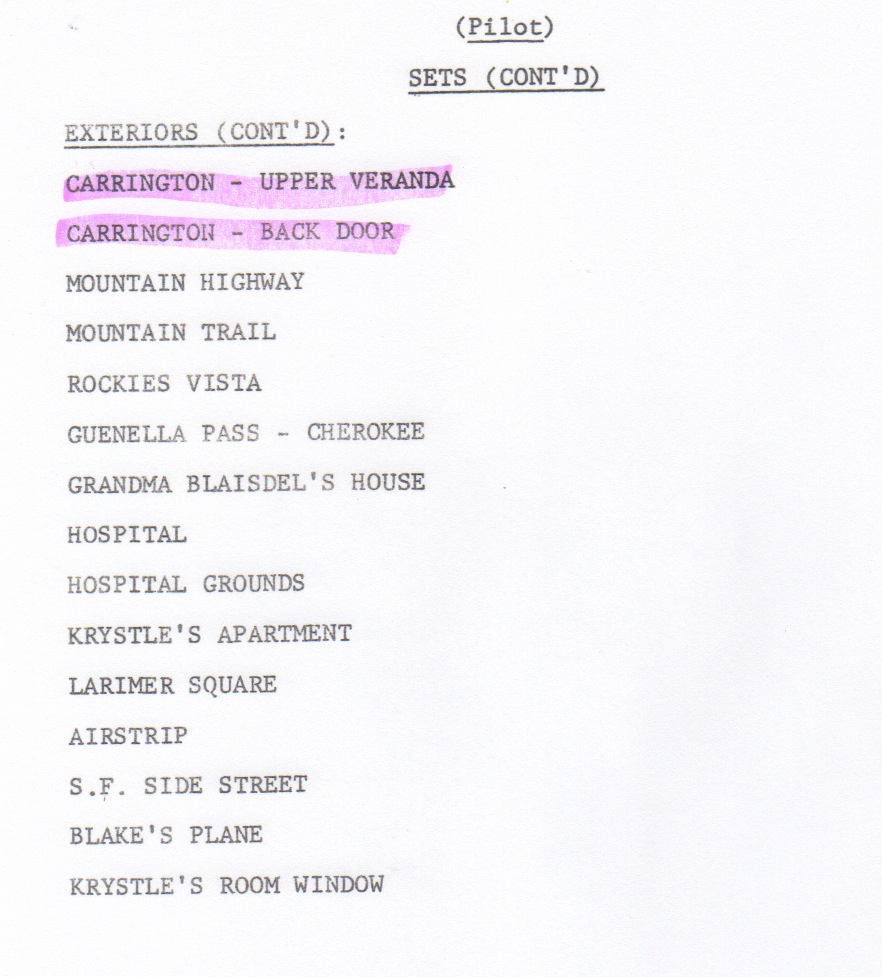


Our major search was for the Carrington estate — residence and grounds (the sets marked in pink). We wanted it to be elegant and expansive, of Citizen Kane-like dimensions. Phil told me the Aaron Spelling production office had stated they wanted the production to be filmed locally, not at some distant site. However soon after I reported, Phil and I flew to Denver, Colorado, where the story of the Carrington’s took place. We were there for just one night and didn’t find anything that could approximate our requirements. The only thing I remember about our jaunt was the impressive lobby of the Brown Hotel in downtown Denver.
Back in southern California we started our search. We traveled north to check out James Brolin’s ranch. It wouldn’t do. I remember visiting the Doheny Mansion, by then housing the American Film Institute. It was impressive, although seeing the opulent interior of that 1899 structure turned into offices, classrooms, editing rooms, etc. was a bit disconcerting. There was a magnificent stairway, but the finely carved railings had been painted an obnoxious pastel color for a Jerry Lewis movie. The layout of the rooms did not meet our requirements, and it lacked the exteriors we would be requiring.
We visited Marion Davies’ old beach home. Again no exteriors and structurally the interiors were wrong, but there was an impressive library.
Casting meetings continued. I remember Linda Evans coming in to meet us about the role of Krystle. I had worked with a very young Linda on THE BIG VALLEY. She was still just as charming and even more gorgeous. I remember Tyne Daly coming in for the role of Claudia Blaisdel. At none of those meetings – George, Linda or Tyne – did the actor read. They were strictly for us to meet them, and Esther always explained OIL was an ensemble piece. Since Phil and I were out searching for our Carrington estate most of the time, there were many meetings we did not attend.
I only remember one casting call where actors actually read, and I remember what a painfully tense situation it was for the actors. To begin with, they were reading for a roomful of people, almost like facing a firing squad, and there was so much more at stake than for the usual audition. If they succeeded in being cast, it would mean employment for a season of work. Beyond that if the series became a hit, well you figure it out. One of the actors who auditioned was Randy Powell. Randy was from my hometown Mason City, Iowa. He was the son of one of my classmates in high school. Randy had just completed a recurring role on the hit series, DALLAS. After he left, Lynn Loring, a fine young actress who had moved into casting and was in Spelling’s casting department, made a cogent comment. Impressed with Randy, she said, “Isn’t it amazing the self-assurance and poise that an actor coming off a long run of employment has.”
A decision was made that tests would be made for two of the roles – Steven Carrington, Blake’s son, and Michael, the chauffeur. Rather than doing the tests on film (which was more expensive) they would be taped at the ABC studios in Hollywood. I would direct the tests. Four actors were tested for each role. Al Corley, John James and two other actors whom I don’t remember tested for Steven, and I don’t remember who tested for Michael. It was a long arduous day, and a halfway productive one. Al Corley won the role of Steven hands down. The role of Michael was still uncast.
When we started preparation, it was hoped we would start filming in six weeks. Casting progressed smoothly, but our search for the Carrington estate seemed grounded at square one, and we gave no attention to all of the other locations that also had to be found. Phil Parslow, our assistant director and I were out almost daily in what turned out to be fruitless searches. Then one day almost two-thirds of the way through that projected six weeks, I arrived at the studio one morning, and Phil told me we were flying to San Francisco to view a location up there. Phil, our assistant director and I boarded a plane, flew to San Francisco, rented a car and motored north to Woodside to an estate referred to as Filoli. Our approach to the home was on a road lined with lush green fields, and then we saw a magnificent brick mansion.
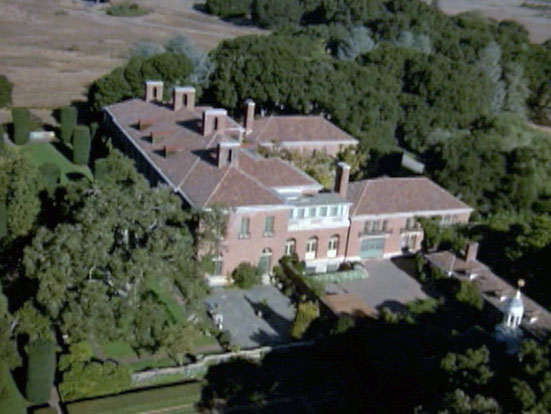
Arrangements had been made, and there was someone to escort us through the house and the grounds. It was overwhelming. Our guide told us the home had been built in 1915 and had been sold two decades later after the deaths of the original owners. Four decades later the second owners donated the estate to the National Trust for Historic Preservation. There was no furniture in the large rooms, but that was no problem. All I had to do was pick the areas I wanted to use, and the production department would dress it. There was a magnificent stairway.
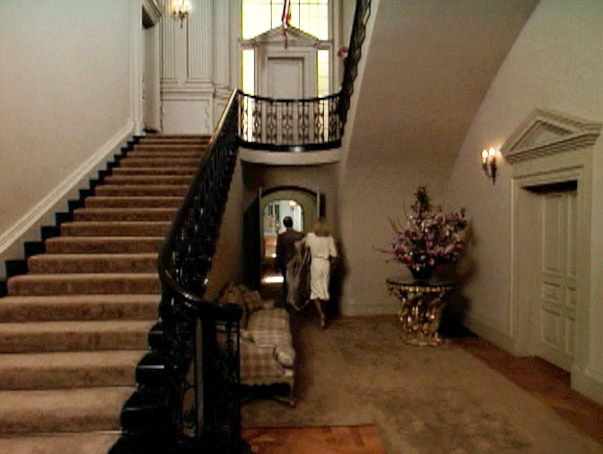
I was blown away by the ballroom.
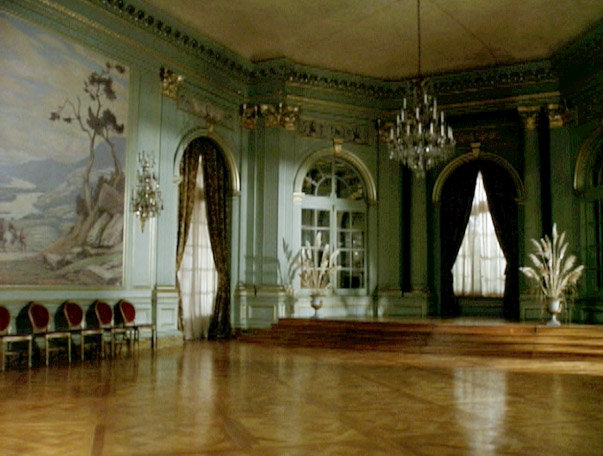
We were told the original owner who had the house built was from Ireland, and because of his love for his home country, murals of Irish landscapes had been painted on the walls. We were also told a fascinating story about the two crystal chandeliers that hung in the ballroom. After World War I, the owner had buyers circulating in Europe to purchase furnishings for the new home. As the story went, the room chosen in Versailles for the signing of the peace treaty had two crystal chandeliers lit by candles. Since the treaty signing ceremony would take longer than those candles burned, two identical chandeliers were created that were electrical. After the signing, the original chandeliers were restored, and the two electrical stand-ins were purchased, shipped to America and hung in Filoli. Many years later when I revisited Filoli, I learned neither of those stories was true. The original owner was born in San Francisco, and the chandeliers had not hung over and lit the signing of the treaty after World War I. That’s unfortunate. That elegant ballroom seemed to call out for the more romantic history regarding its creation. In my mind, I revert to that old adage: if there is a difference between truth and the legend, print the legend.
Our script called for a carriage house. They had one, and it came equipped with carriages.
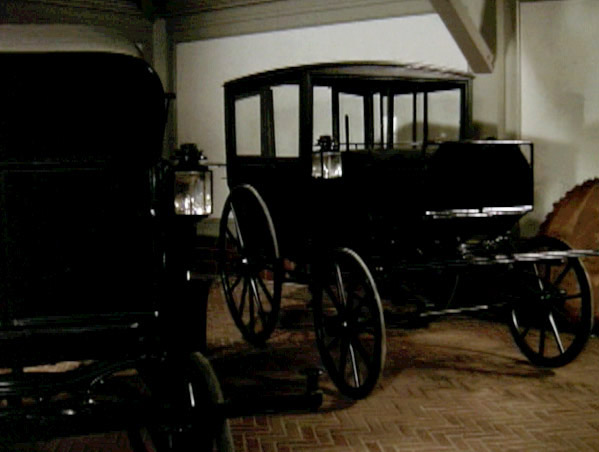
We were told there were seven formal gardens. They truly were awesome.
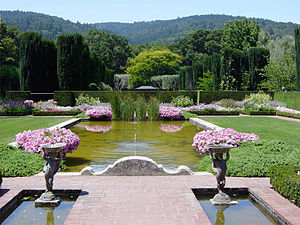
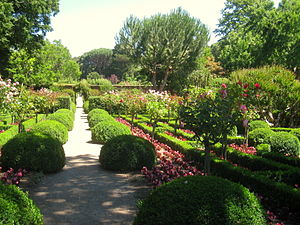

As we roamed about, our assistant director said to me, “It’s just as good as I always knew it would be.” My ears perked up. I knew the Spelling production office had said they wanted the film shot locally in southern California. I was also aware that Phil as line producer felt he was charged with protecting the creative visions of the Shapiro’s. I went to him and told him what I had just learned, that our assistant director, who had spent weeks with us searching futilely for a location, had known all the time of Filoli’s existence. Did he want an assistant director whose allegiance was to the Spelling production office, not to the Shapiro’s. Phil agreed. After we returned to Los Angeles, the assistant director was replaced.
Casting had continued and was almost completed. George Peppard would be playing Blake Carrington. Linda Evans had been cast as had Bo Hopkins and Dale Robertson. Al Corley and Pamela Sue Martin would play Blake’s children. I had suggested fourteen-year old Katy Kurtzman (she had been my Heidi in THE NEW ADVENTURES OF HEIDI and had appeared in my THE SCAVENGERS on HOW THE WEST WAS WON) for the role of Bo Hopkins’ daughter, and she had been cast. Back in Los Angeles we proceeded to find the rest of our locations. We would spend the first twelve days of our twenty-four day shooting schedule filming on the Filoli estate. The remaining twelve days we would film in and around Los Angeles. Our six-week prep was over. I was ready to say “Action!” The pain of what had been such a rocky start for me had dimmed. Fortunately I couldn’t see the rocks that loomed just around the corner.



Great, fascinating stuff, Ralph. I look forward to the next chapter!
I’m eagerly awaiting the continuation. Sometimes reality just crosses all plans and expectations. Remember the short film project from which I’ve sent you the audition/rehearsal tapes of the two actresses? I wrote that script in August, 2012, began preparation that fall, and unfortunately it’s still unmade. Although I haven’t dealed with the project for a year now.
Also, I like the two pics you posted. It may sound strange, but it helps me putting a face to all these stories about making Star Trek and the other shows.
Keep going, Ralph! I love stories about casting..so fascinating. So curious to know what happened to Peppard. Wonderful to see you and Sarane during moments of joy. xo
Well keep watching. There’s much to tell and it will start very soon!
This is such great stuff – so interesting to me because I would NEVER miss an episode of Dynasty. (They just don’t make ’em like that any more.) Have trouble getting interested in a series today for more than one or two. And Ralph, it is heart rending for me to read about the beautiful Sarane.
I assume George Peppard’s orange hair was from the movie ‘Battle Beyond the Stars’.
Love the name-dropping in this post, which included one of my favorites, Lynn Loring. There’s a fascinating Internet article in the LA Times about her (1/24/1990)…by then, she was the president of MGM/UA Television Productions, but was not particularly thrilled about it:
“This is not a golden age for television,” Loring continued, staring pensively into the nearly deserted breakfast room of the Four Seasons Hotel with eyes as round and wide as those of her childhood publicity stills, cigarette smoke framing her face along with her curly russet hair. “The show has gone out of it, and we’re left with the business.”
“I never wanted to grow up to be president of a studio.”
I drew a total blank in my mind regarding Randy Powell…and I was a regular viewer of ‘Dallas’ during its early years. After looking him up, now I know who you’re talking about. He was the young lawyer who did J.R.’s dirty work…but then he got too big for his britches and J.R. ran him out of town. What part did he audition for?
I can’t wait for the next installments on this project. The ‘E! True Hollywood Story’ series did an episode on ‘Dynasty’, which I saw on Youtube a few years ago (before it was deleted). The details regarding the pilot were quite skimpy. Heck, they didn’t even mention Ralph or his position! I guess they assumed the pilot directed itself.
Regarding Randy, I don’t remember what he auditioned for. Possibly Jeff (who marries Fallon) or Michael, the chauffeur.
Today my sister reminded me that while visiting the set you referred to George as George “Poop-ard” — I wonder why?